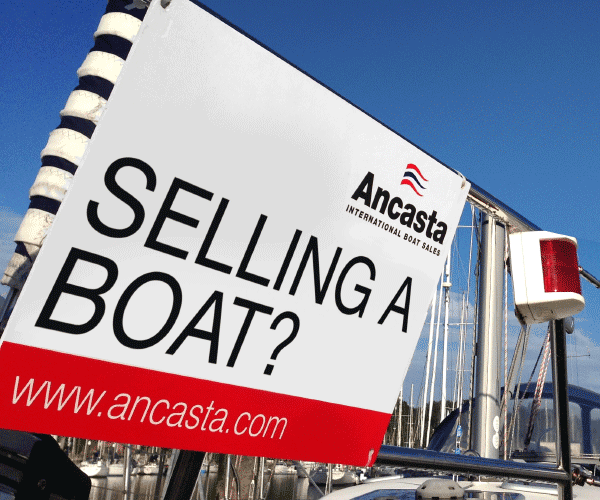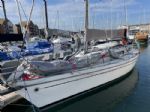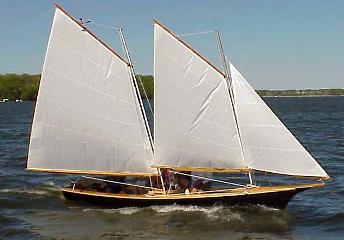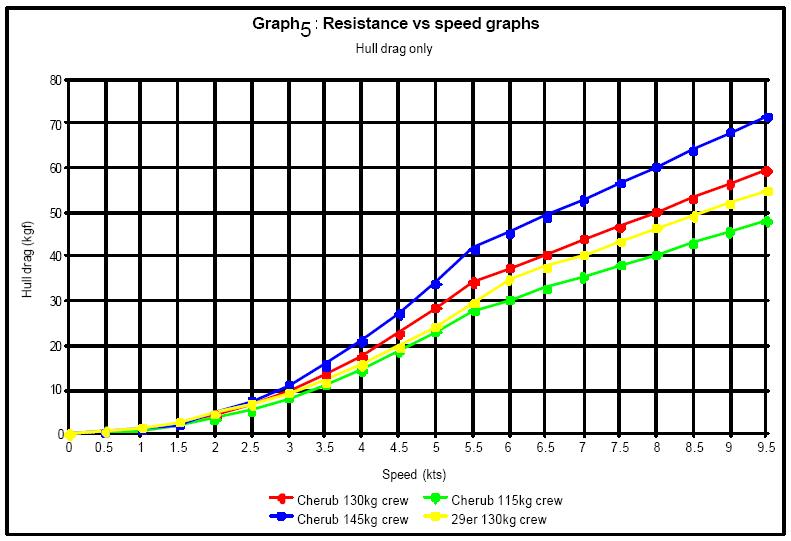












| Laser 140101 Tynemouth |
 |
| Laser 28 - Excellent example of this great design Hamble le rice |
 |
| Rossiter Pintail Mortagne sur Gironde, near Bordeaux |
 |
List classes of boat for sale |
Technical query |
Post Reply 
|
Page <123> |
| Author | ||
Stefan Lloyd 
Really should get out more 
Joined: 03 Aug 04 Online Status: Offline Posts: 1599 |
 Post Options Post Options
 Quote Quote  Reply Reply
 Topic: Technical query Topic: Technical queryPosted: 21 Feb 06 at 1:35am |
|
|
According to whose theory? It isn't nearly so simple. Weight makes much less difference in displacement mode than in planing mode. At lower speeds induced drag from foils is important, at higher speeds it is less important.
|
||
 |
||
Blobby 
Really should get out more 
Joined: 07 May 04 Location: Australia Online Status: Offline Posts: 779 |
 Post Options Post Options
 Quote Quote  Reply Reply
 Posted: 21 Feb 06 at 7:29am Posted: 21 Feb 06 at 7:29am |
|
|
This one by Kevin Ellway... |
||
 |
||
Stefan Lloyd 
Really should get out more 
Joined: 03 Aug 04 Online Status: Offline Posts: 1599 |
 Post Options Post Options
 Quote Quote  Reply Reply
 Posted: 21 Feb 06 at 7:47am Posted: 21 Feb 06 at 7:47am |
|
|
Thanks. A logarithmic Y-scale would have shown more detail in the bottom left-hand corner but it does indeed appear that, as I suggested, the weight difference is much more proportionally significant at planing speeds than at displacement speeds. Who is Kevin Ellway and any idea how he produced this data? |
||
 |
||
JimC 
Really should get out more 

Joined: 17 May 04 Location: United Kingdom Online Status: Offline Posts: 6662 |
 Post Options Post Options
 Quote Quote  Reply Reply
 Posted: 21 Feb 06 at 8:34am Posted: 21 Feb 06 at 8:34am |
|
Howevere that's not a reasonable definition of planing. Catamarans and Her Majesty's destroyers, to take two examples, will hapily exceed "hull speed" without doing anything you could reasonably describe as planing. |
||
 |
||
Bumble 
Far too distracted from work 

Joined: 12 Nov 05 Location: Taiwan Online Status: Offline Posts: 302 |
 Post Options Post Options
 Quote Quote  Reply Reply
 Posted: 21 Feb 06 at 9:17am Posted: 21 Feb 06 at 9:17am |
|
|
||
 |
||
Blobby 
Really should get out more 
Joined: 07 May 04 Location: Australia Online Status: Offline Posts: 779 |
 Post Options Post Options
 Quote Quote  Reply Reply
 Posted: 21 Feb 06 at 9:45am Posted: 21 Feb 06 at 9:45am |
|
|
I never said it was a reasonable definition. It is however the only definition of planing to which you can provide a simple answer to the question. As you know better than I do Jim there are far more factors than just length that affect the onset of planing (rocker profile, rise of floor, beam, trim, heel just to name a few). Apart from that there is a continuum from 100% of the lift required to stop the hull from sinking coming from displacement to 100% coming from dynamic lift (if you can ever actually achieve this). Where on this continuum do you define planing as starting? The answer is that you can't define it without an arbitrary or subjective imposition of a border between the two. |
||
 |
||
JimC 
Really should get out more 

Joined: 17 May 04 Location: United Kingdom Online Status: Offline Posts: 6662 |
 Post Options Post Options
 Quote Quote  Reply Reply
 Posted: 21 Feb 06 at 10:23am Posted: 21 Feb 06 at 10:23am |
|
|
I suppose it might be possible to produce an arbitary definition, but I've never heard of one existing. The whole area is complicated, and my thinking on the subject has changes a lot in recent years: I'm only too aware of how much I don't know.
There are clearly design alternatives between a boat that planes early - I can't think of any obvious reason why a boat couldn't be planing below hull speed - and one that doesn't plane until well beyond hull speed. I know that Chris is of the opinion that design has moved away from the early planing in the 70s to boats that plane later but are lower drag through the transition. I've got some sympathy for this view. What I don't know is how you'd define planing or even measure it. I'm not even sure in the current state of the art whether its useful. On Kevins chart, I *think* I've seen it before and I *think* its theoretically rather than empirically derived. I'm not sure quite how valid the theory is for these sized boats, but could be wrong on all fronts. |
||
 |
||
Stefan Lloyd 
Really should get out more 
Joined: 03 Aug 04 Online Status: Offline Posts: 1599 |
 Post Options Post Options
 Quote Quote  Reply Reply
 Posted: 21 Feb 06 at 10:43am Posted: 21 Feb 06 at 10:43am |
|
|
Depends on the class I think. Merlins, for example, have been seeking earlier planing for the last decade and will now, in very favourable conditions, plane upwind. AFAIK the definition of planing refers to the hull being raised above its wavetrain by hydrodynamic lift. Planing is, as you pointed out, not the only way hull speed can be exceeded. Very long narrow hulls such as multihulls and some warships can also exceed hull speed without planing. |
||
 |
||
m_liddell 
Really should get out more 
Joined: 27 May 05 Location: United Kingdom Online Status: Offline Posts: 583 |
 Post Options Post Options
 Quote Quote  Reply Reply
 Posted: 21 Feb 06 at 12:08pm Posted: 21 Feb 06 at 12:08pm |
|
|
The first time I took my 14 out I got someone to video us from a RIB behind the boat. It was single wire occasional marginal twin wire conditions, upwind you can see as soon as the crew hits the wire the wake behind the boat change as it starts to plane. Interesting to watch. Despite my 14 being a old design the transition from displacement to planing upwind is very subtle, but after sailing the boat a few times you can feel it happen. |
||
 |
||
Barty 
Far too distracted from work 

Joined: 16 Mar 04 Location: Scotland Online Status: Offline Posts: 240 |
 Post Options Post Options
 Quote Quote  Reply Reply
 Posted: 21 Feb 06 at 2:07pm Posted: 21 Feb 06 at 2:07pm |
|
|
Lift is defined by the equation: L=0.5CLñsv2 NOTE: ñ should be Rho the greek letter P but the symbol won't work on here! where CL is the coefficient of lift, ñ is the density of water, s is the surface area and v is the velocity squared Lift will be close to the displacement weight at the point of planning, i.e is the boat and crew weighs 300kg then 300kg of lift would take it out the water but something less will start to lift it out. Rearranging for speed gives v = square root (L/0.5CLñs) The density of water is fixed and the coefficient for lift ahould be assumed relatively constant so the only thing that affects the speed is surface area. This is why in all RYA learn to sail bits it tell you to lean back when its windy on a reach. This pulls the bow up and effectively reduces surface area and hence the potential to plane. If you had a boat with flat sections all the way down the hull it is hard to reduce surface area even when hanging of the back. Clever designers produce hull shapes that allow the surface area to be reduced the faster the boat goes. Think of a jet plane wing. Next time you take off look at the wing. They extend the trailing edge to increase surface area at lower speeds to increase lift. Once in the air and speed increase they retract the trailing edge to give a smaller surface area and therefore the ability to fly faster. If only it was this simple in a dinghy Look at RIBS and you will see that most have a 'shallow' V hull i.e. relatively flat, which is good for getting onto the plane but then difficult to reduce wetted area easily. This is why it has spray rails to allow the boat to climb progressively up the rails and hence reduce wetted area. Offshore RIBS tend to have 'deep' V hulls so that the wetted area can quickly be reduced to give higher speed potentials. So our friend Froude quite rightly says that a long boat will go faster than a shorter one but a shorter one can plane faster if the hull design allows wetted area to be reduced and has the available power to maintain the increases in speed required. |
||
 |
||
Post Reply 
|
Page <123> |
| Forum Jump | Forum Permissions  You cannot post new topics in this forum You cannot reply to topics in this forum You cannot delete your posts in this forum You cannot edit your posts in this forum You cannot create polls in this forum You cannot vote in polls in this forum |
Copyright ©2001-2010 Web Wiz
Change your personal settings, or read our privacy policy











 Printable Version
Printable Version Delicious
Delicious Digg
Digg Facebook
Facebook Furl
Furl Google
Google MySpace
MySpace Newsvine
Newsvine reddit
reddit StumbleUpon
StumbleUpon Twitter
Twitter Windows Live
Windows Live Yahoo Bookmarks
Yahoo Bookmarks Topic Options
Topic Options
